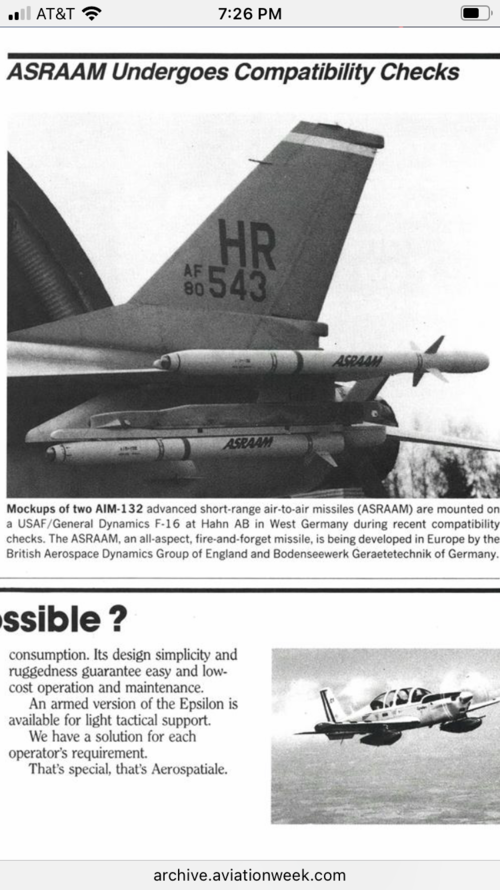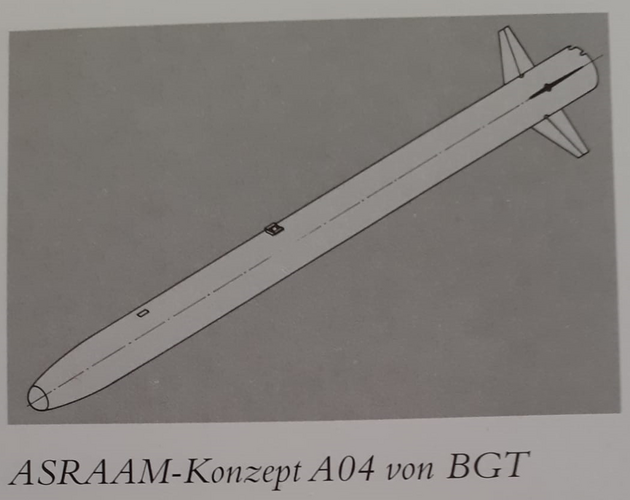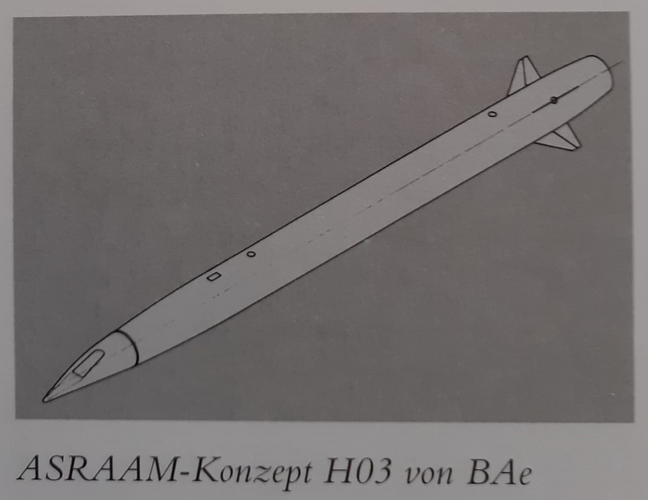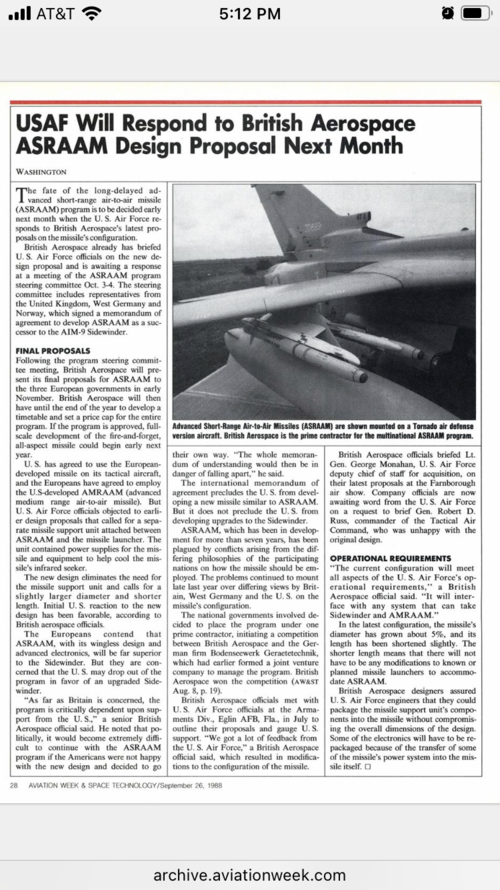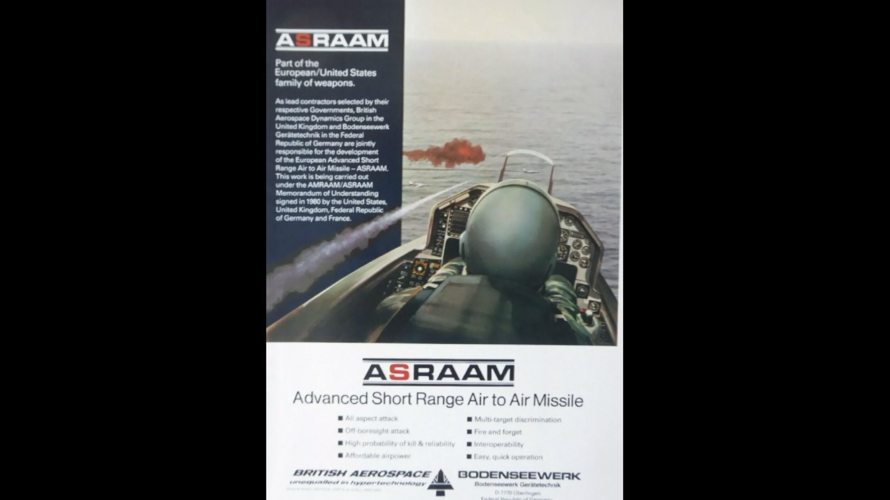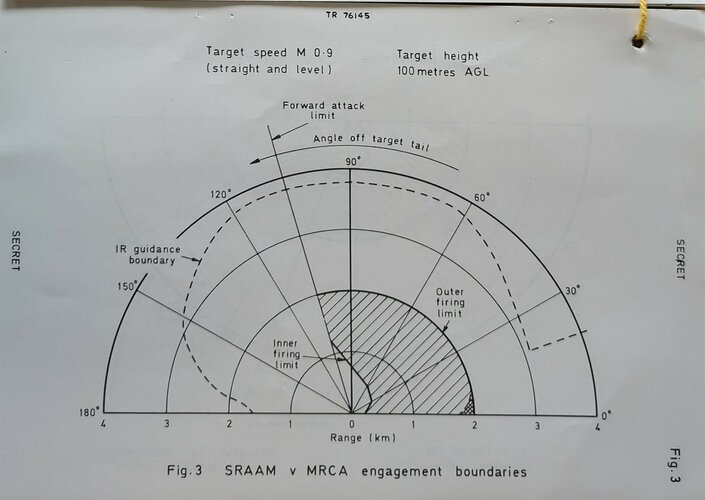British Develop Air-to-air Missile with Accurate Hit Capability
JANUARY 26 1981
Hatfield, England —British Aerospace Dynamics is developing a small, highly maneuverable air-to-air missile called Flame with a sufficiently accurate infrared guidance system to guarantee a direct hit even from a poor launch position. The company is seeking a U. S. associate.
Work to date is part of a prefeasibility study being conducted by British Aerospace Dynamics and Bodenseewerk Geratetechnik GmbH of West Germany under the air-to-air missile development agreement between the U. S., Britain, West Germany and France (AW&ST Aug. 25, 1980, p. 14).
Under terms of the memorandum of understanding signed by the four nations, the U. S. will develop an advanced medium-range air-to-air missile (AMRAAM) and the European nations will develop the advanced short-range air-to-air missile (ASRAAM). Both missiles will be crosslicensed eventually for production on both sides of the Atlantic.
Prefeasibility ASRAAM studies are being conducted by France and jointly by Britain and West Germany. These studies are expected to be completed by the end of 1981.
Feasibility studies are expected to be completed by the end of 1982 and the goal is to select a European design for the ASRAAM and have full development completed by late 1985.
British Aerospace studies have led to two possible approaches to the new missile, both of which are now being studied with Bodenseewerk Geratetechnik and Marconi Avionics, along with proposals by that company.
The two British proposals are:
■ FAAM, or future air-to-air missile, which is a development of the earlier short-range air-to-air missile (SRAAM), and which has been under development at British Aerospace since the mid-1960s. FAAM would be a wingless missile using thrust vector control as well as aerodynamic controls and it would have a simple infrared guidance system with a large, proximity-fuzed warhead. It would be approximately the same size as the Sidewinder missile but “would be more potent,” according to Lawrence G. Evans, managing director of British Aerospace Dynamics’ Hatfield Div.
■ Flame, or fast, lightweight, agile missile, would take the opposite approach to that of FAAM. Instead of being an evolutionary improvement of the existing generation of infrared guided air-to-air missiles, it would use a different technological approach.
Requirements for the ASRAAM cover two divergent areas, which has made it difficult to design a single missile to cover all the needs envisaged, according to Stan Leek, future projects and research manager at the division.
The two areas are:
■ Combat—In this case, the pilot is on a mission to kill enemy aircraft and wants a missile that will impose minimum workload and that will have a maximum ability to be launched. Launches will have to be made under high-g conditions, with targets off the weapon’s boresight and at maximum visible range.
■ Self-protection—Pilots using the missile for self-protection usually will be on close-support or strike missions and will not have aircraft configured for air-to-air combat. They will, therefore, want a weapon that can be fired rapidly and will have a short time of flight so they can hit their attacker before they themselves are hit.
These requirements have driven British Aerospace to look seriously at the Flame concept, which would be compatible with aircraft now carrying Sidewinder-type missiles, but would enable a number of higher performance missiles to be carried on each Sidewinder station.
The ability already demonstrated by British Aerospace Dynamics to produce an infrared guidance system that can guide a missile to physically hit the target aircraft also is pushing development toward the Flame concept.







